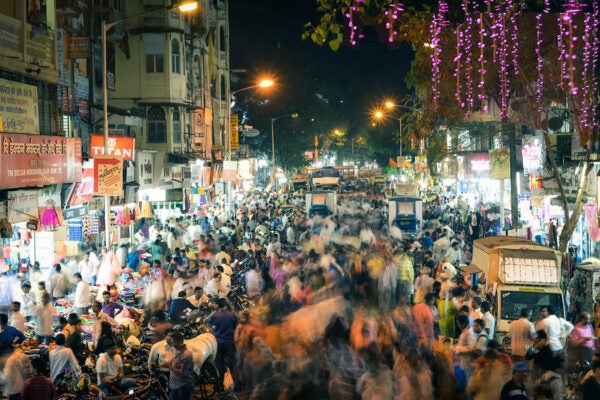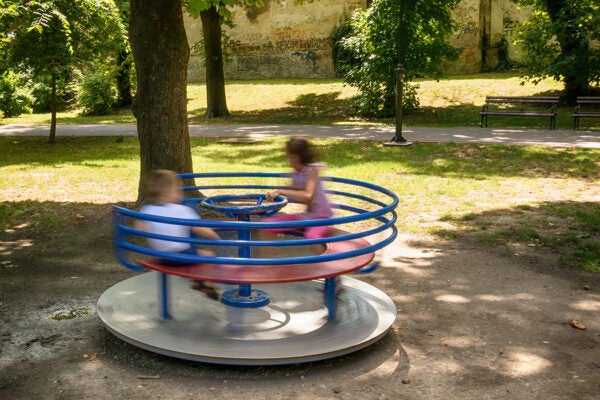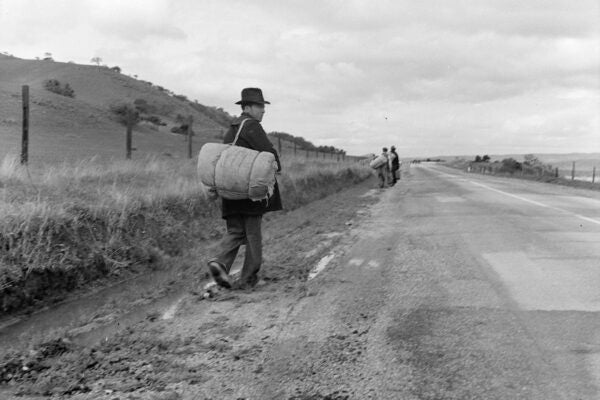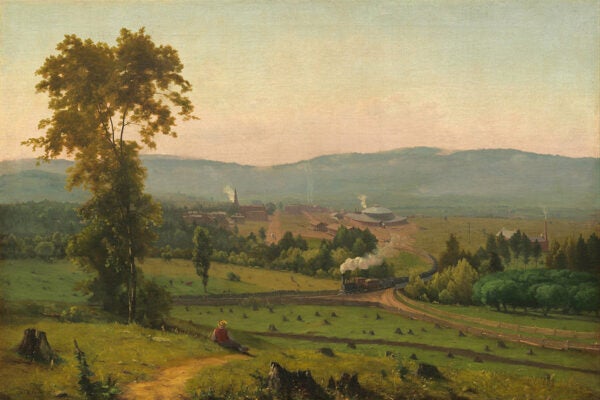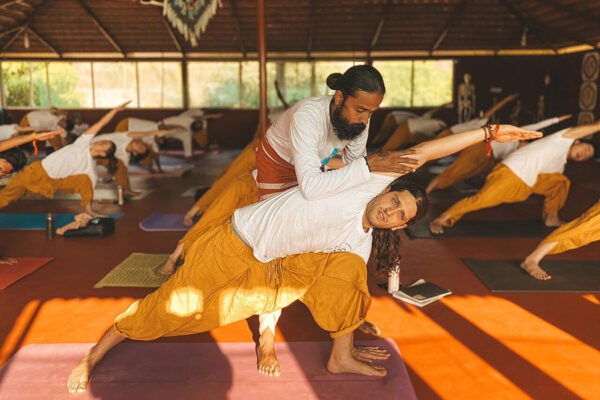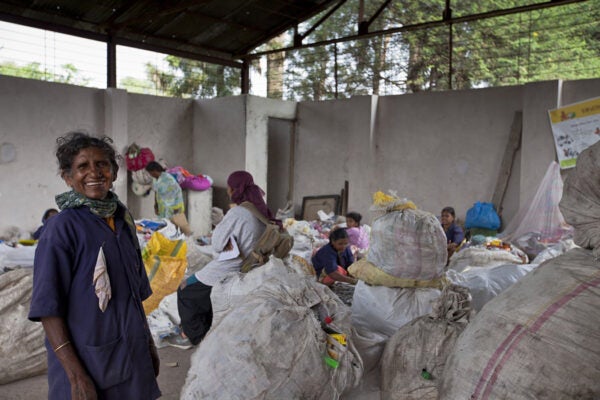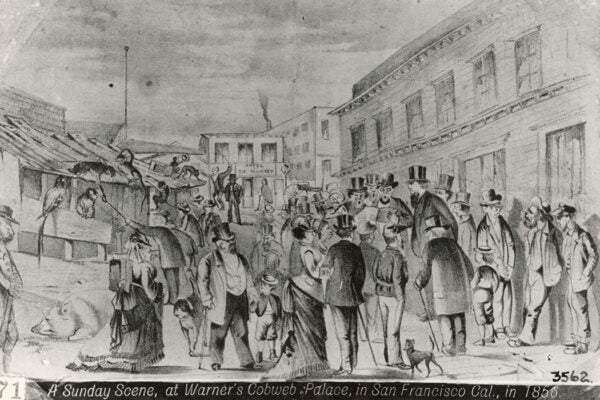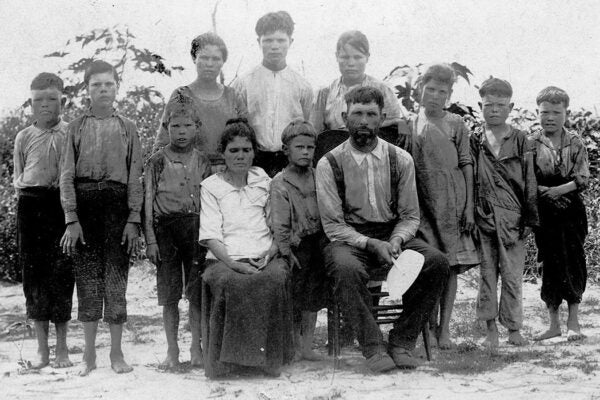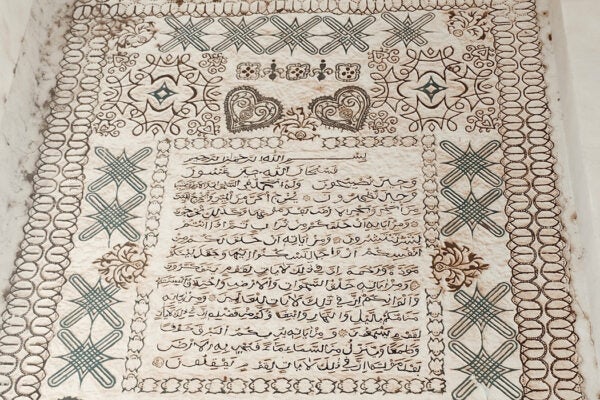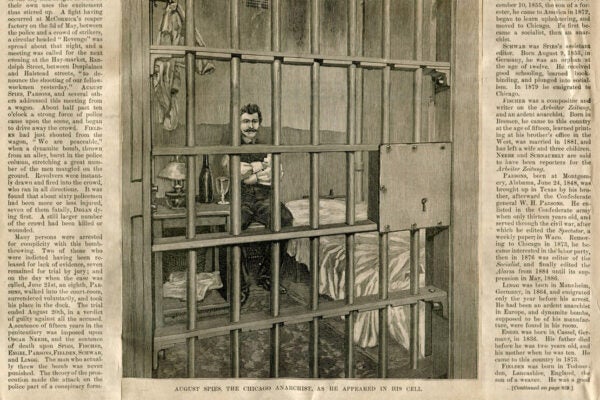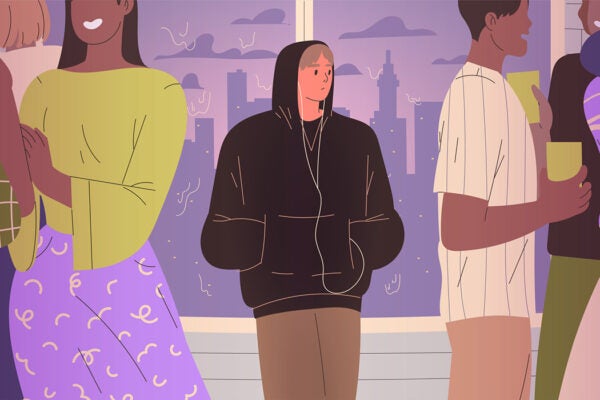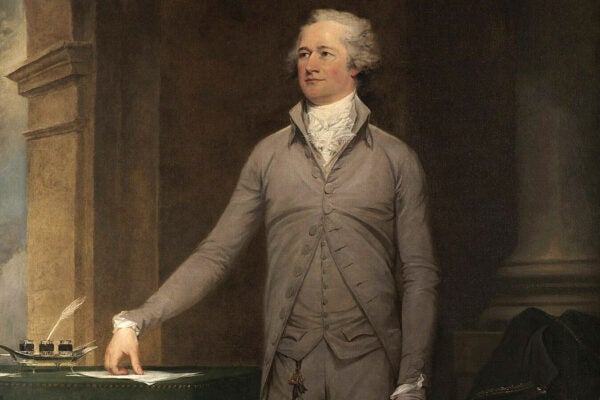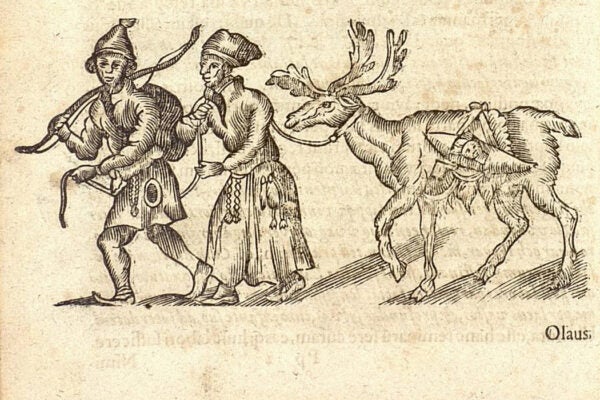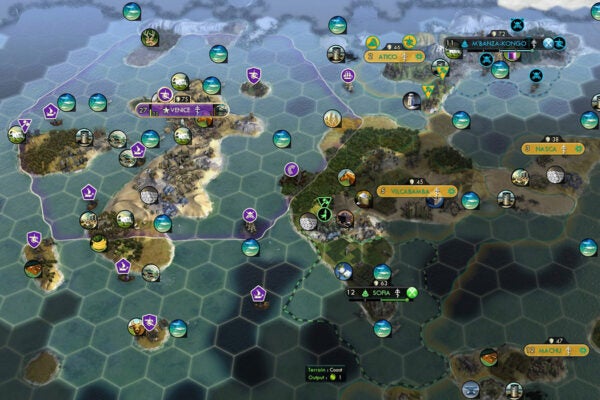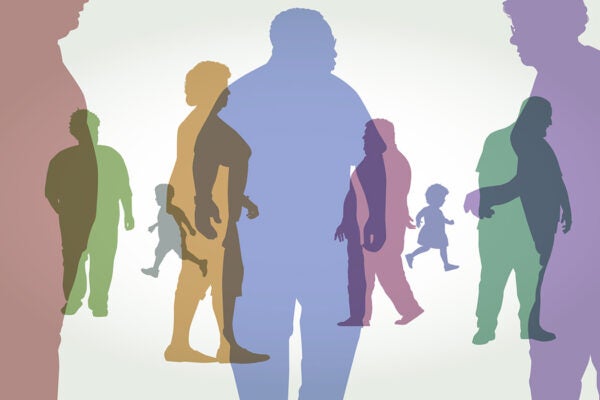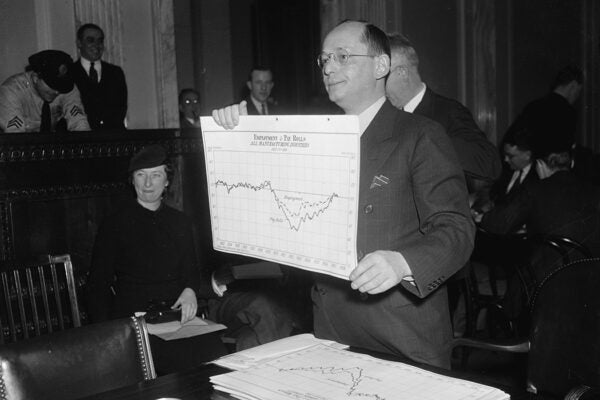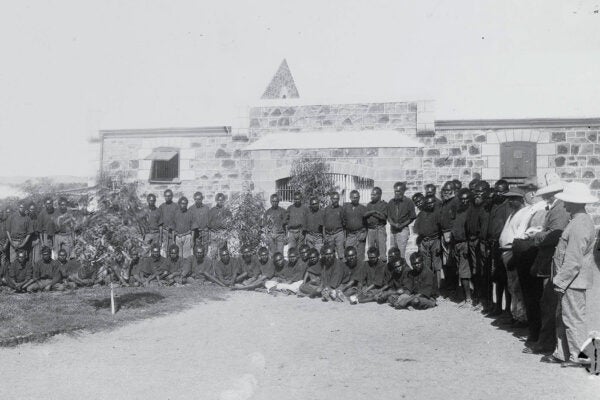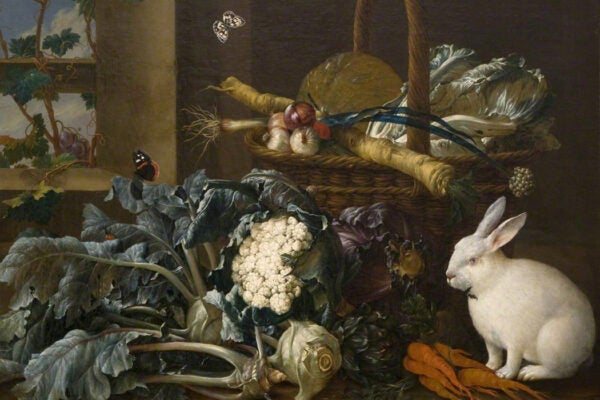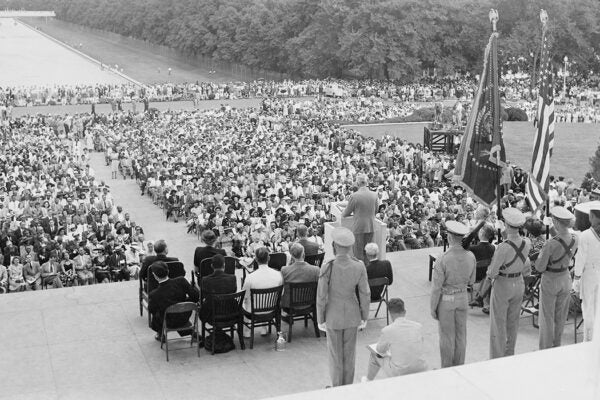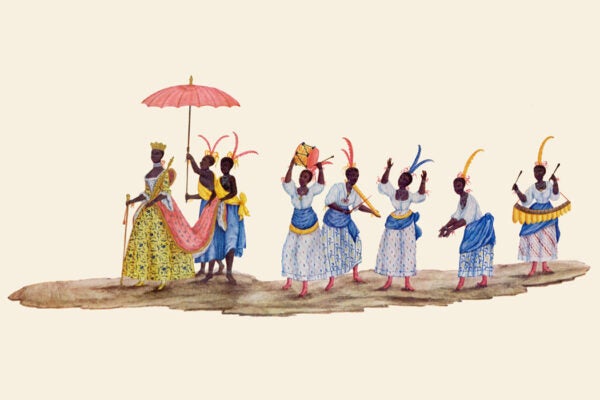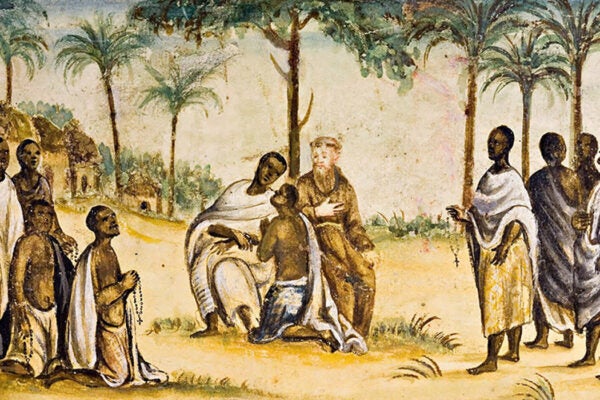In Praise of Loitering
A possible remedy to sexual harassment and assault in public spaces is to encourage more people of all kinds to spend time on the streets.
Playing with Consciousness
Out-of-the-ordinary mental states are the goal of many religious rituals, but they’re also important in “playful” situations like kids’ games and fraternal hazing.
Quakers Against Thanksgiving
In colonial America, government “thanksgivings” blurred faith and politics. For Quakers, rejecting them was an act of religious conviction.
Los Angeles’s War on Tramps
In the 1880s, Los Angeles began a large-scale project of incarcerating unemployed men whom they viewed as a threat to the vigor of white America.
The Art of Deforestation
Landscape paintings show how quickly American forests changed in the early nineteenth century—and the mixed feelings people had about that change.
Should Yoga Be More Than Exercise?
How should Westerners studying modern postural yoga think about the religious and medical systems in which it developed?
Waste Pickers Unite!
As one family’s story reveals, labor organizing and the development of a co-op for waste collection has improved conditions for precariously employed workers in India.
The Politics of Our AI Overlords
Fears of AI often focus on domination by algorithm-powered capitalism, but science fiction once used societies ruled by computers as analogs for communism.
Miners and Monkeys
There were compensations for the hardscrabble life of the Gold Rush—like monkeys and parrots brought to California for companionship and entertainment.
Defining “White Trash”
The term “white trash” once was used to disparage poor white people. In the Civil Rights era, its meaning shifted to support business-friendly racial politics.
Islamic Calligraphy in West Africa
The Hausa people of northern Nigeria have adapted—and continue to transform—sacred Islamic calligraphy that originated in the Arab world.
From Neoliberalism to Trumpism
The neoliberal politics that developed in the 1970s created financial instability and fragmented cultural markets, helping to pave the way for Trumpism.
Demonizing Immigrants in the 1880s
American newspapers portrayed members of immigrant groups as potential anarchists, linking the ideology to other anxieties and stereotypes about foreigners.
What Did the COVID Pandemic Do to Our Minds?
The pandemic’s transformation of daily lives around the world led to a loss of the bodily feeling of social trust across entire communities at once.
Hamilton’s Real Immigration Story
The popular musical poses Alexander Hamilton as a symbol of the value of immigrants brought to America, but over time, his party became increasingly xenophobic.
Colonialism, Resistance, and Liquor
For both the Shawnee of North America and the Sámi of northern Europe, alcohol provided by colonizing powers was a symbolic and practical political issue.
History and Civilization
The Civilization video games may not convey actual history very well, but they’ve encouraged generations of young people to learn more about the past.
Weight in the Sociology Classroom
Body weight is in some ways a trickier topic for sociology students than other stigmas. One professor explains how he approaches the challenge of discussing it.
Where Do Economic Statistics Come From?
Many ways of measuring the economy came about in the decades between the American Civil War and World War II. We’ve been arguing about them ever since.
How Forced Labor Built Western Australia
The nineteenth-century colonial economy of Western Australia depended on unfree labor, whether from indentured workers, convicts, or Indigenous people.
Vegetarian Heretics and the Christian Church
Since the religion’s early days, Christian thinkers have treated vegetarianism sometimes as heretical, sometimes as evidence of saintly asceticism.
The Sacred and Profane Dogs of Mongolia
In Mongolia, dogs are close companions to humans and a key part of a cosmology with Buddhist and shamanic influences. But they’re also seen as unclean.
Why Did Truman Support Civil Rights?
Truman’s domestic agenda attempted to solve the problem of Black American oppression while undermining the progressive wing of the Democratic Party.
The Roots of Catholic Samba
Since the early days of African enslavement in Brazil, Black Brazilians have cultivated rituals that mix Catholic and African elements in the form of holy Samba.
Kongo, Interpreted
In the sixteenth century, Kongo’s government trained young nobles to provide interpretation and cultural mediation between Europeans and Kongolese.

